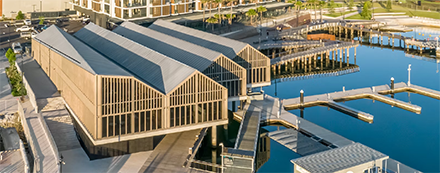A commitment at COP28 by the Federal Government, and 16 other countries, to increase the use of timber in the built environment by 2030 is, on face value, a very good result.
Timber, as has been pointed out again and again, from sustainably managed forests provides climate solutions within the construction sector and is the ultimate renewable.
All very good, but where, in Australia’s case, is the timber going to come from to meet such a commitment?
At present, the picture isn’t pretty.
Typically, Australia produces 80% of its required timber domestically, with the remaining 20% sourced from international suppliers. This split has remained steady over recent years; however, both sources have been significantly affected over the past couple of years.
Global supply has been affected by the rerouting of available timber to markets paying the highest cost price, typically the United States, following the 2021 global building boom.
Domestic supply has also been affected by Covid, bushfires, and flood events, all contributing to the availability of timber for harvesting.
The NSW Forestry Corporation estimates the 2019 fires reduced the amount of available quality timber by as much as 30% in key growing regions. In the NSW North Coast Region, for example, 49% of native forests were recorded as impacted by fire.
And of course, the federal government’s HomeBuilder scheme announced in 2020 has driven record levels of home building activity across the country, and continues to cause significant pressures to build across the supply chains supporting the industry, further impacting the timber shortage.
On top of that, the HIA reports that builders are finding it increasingly difficult to find sufficient skilled trades people to undertake building works.
NSW-based Sustainable Forest Management reported some time ago that the Federal Government’s $86 million investment in timber plantations to help offset the timber demand will not be realised until at least 2047.
SFM says that the significant timber shortage is expected to continue through 2022 and into 2023. However, it has been forecasted that Australia will remain short on timber until 2035 and beyond. Increasing timber production is not a quick fix.
The crackdown on multinational tax avoidance which may threaten to undermine Victoria’s future timber supply is also of concern.
The Herald Sun reported this week that a Federal Government Bill that will now come under the microscope of a Senate committee is set to claw back $700 million from 2500 large companies over two years – with plantation forestry businesses facing a $10 million tax hike.
It places the Victorian government’s own pledge to plant an extra 16 million trees in a new estate is also at risk.
Which brings us back to the earlier question; where is the timber going to come from?
Well, obviously some is going to have to come from overseas, particularly when it comes to engineered wood for construction. Australian suppliers will probably only be able to meet some of that demand.
Much has been made of issues concerning imported timber, in particular issues such as sustainability, environmental and worker safety.
Australia’s Forestry Ministers this week took a major step in this direction towards preventing the trade of illegally logged wood, with work to expand the world’s largest timber database.
As a part of the Federal Government’s Improving Australia’s illegal logging traceability and timber identification systems Budget measures, a $1.2 million grant has been awarded to World Forest ID (WFID), to create a reference database for the science-based verification of species and origin of harvest.
Minister for Agriculture, Fisheries and Forestry Murray Watt expanding the database to include key species traded into Australia will improve our ability to detect illegally logged timber and prevent it from entering the market.
“Expanding the database to include key species traded into Australia will improve our ability to detect illegally logged timber and prevent it from entering the market,” he said.
It’s a great move, but we are still sadly still a long way behind the Federal Government’s January announcement of one billion plantation trees.
So, a commitment at COP28 to increase the use of timber in the built environment by 2030 is a great move.
So is preventing the trade of illegally logged wood.
But it doesn’t answer the vital question – where is the timber for construction in Australia going to come from?







